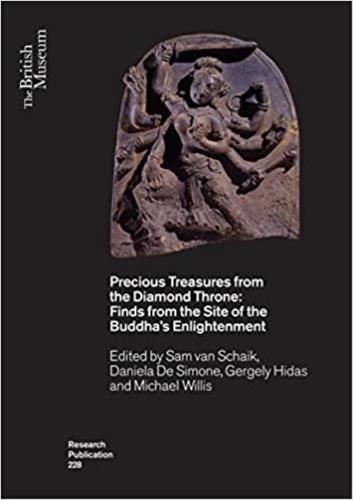Readings Newsletter
Become a Readings Member to make your shopping experience even easier.
Sign in or sign up for free!
You’re not far away from qualifying for FREE standard shipping within Australia
You’ve qualified for FREE standard shipping within Australia
The cart is loading…






The Mahabodhi temple at Bodhgaya in eastern India has long been recognised as the place where the Buddha sat in meditation and attained enlightenment. The site, soon identified as the ‘Diamond Throne’ or vajrasana, became a destination for pilgrims and a focus of religious attention for more than two thousand years.
This volume presents new research on Bodhgaya and assesses the important archaeological, artistic and literary evidence that bears witness to the Buddha’s enlightenment and to the enduring significance of Bodhgaya in the history of Buddhism. The book brings together a team of international scholars to look at the history and perception of the site across the Buddhist world and its position in the networks of patronage and complex religious landscape of northern India. The volume assesses the site’s decline in the thirteenth century, as well as its subsequent revival as a result of archaeological excavations in the nineteenth century. Using the British Museum’s collections as a base, the authors discuss the rich material culture excavated from the site that highlights Bodhgaya’s importance in the field of Buddhist studies.
$9.00 standard shipping within Australia
FREE standard shipping within Australia for orders over $100.00
Express & International shipping calculated at checkout
The Mahabodhi temple at Bodhgaya in eastern India has long been recognised as the place where the Buddha sat in meditation and attained enlightenment. The site, soon identified as the ‘Diamond Throne’ or vajrasana, became a destination for pilgrims and a focus of religious attention for more than two thousand years.
This volume presents new research on Bodhgaya and assesses the important archaeological, artistic and literary evidence that bears witness to the Buddha’s enlightenment and to the enduring significance of Bodhgaya in the history of Buddhism. The book brings together a team of international scholars to look at the history and perception of the site across the Buddhist world and its position in the networks of patronage and complex religious landscape of northern India. The volume assesses the site’s decline in the thirteenth century, as well as its subsequent revival as a result of archaeological excavations in the nineteenth century. Using the British Museum’s collections as a base, the authors discuss the rich material culture excavated from the site that highlights Bodhgaya’s importance in the field of Buddhist studies.